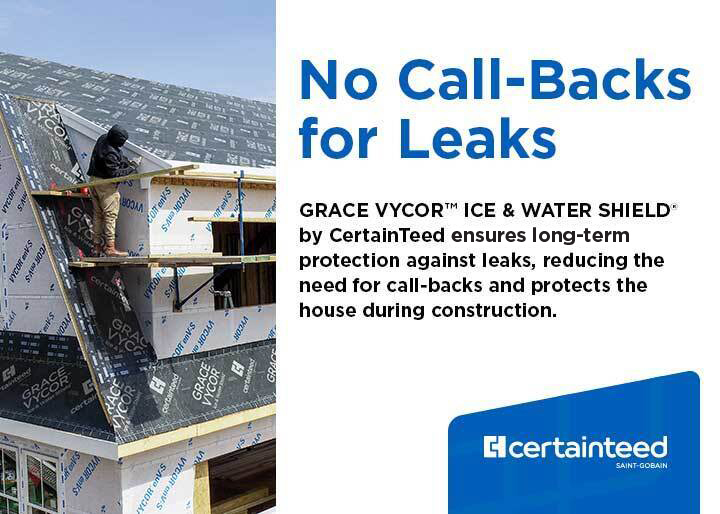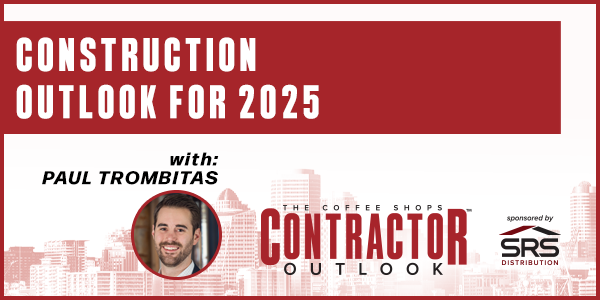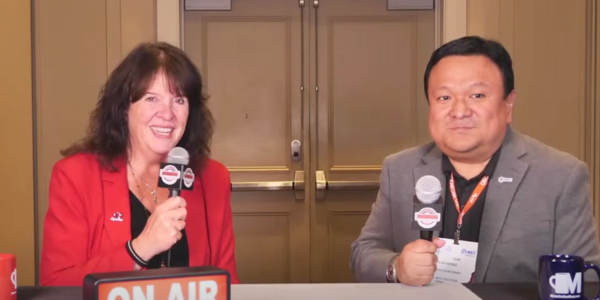Construction Outlook for 2025 - PODCAST TRANSCRIPT
March 26, 2025 at 2:00 p.m.Editor's note: The following is the transcript of a live interview with Paul Trombitas of FMI Research. You can read the interview below or listen to the podcast.
Intro: Hello and welcome to Contractor Outlook newscast. This is Heidi Ellsworth with the coffee shops, and we are here to talk about what's happening in construction. I have to tell you, so much is happening out there, whether it's weather, economics, government, it is across the board changing rapidly. So we have to always get with our experts in the field to be able to really understand what's happening. And our favorite every day is Paul Trombitas, FMI Research. Paul, thank you for joining us again.
Paul Trombitas: Well, Heidi, thanks for having me. I love being on the podcast, and it's always a pleasure talking with you and we always have such great conversations. So excited to be here.
Heidi Ellsworth: I know, I love it. I love these conversations. I look forward to 'em all the time. And you know, I really enjoy the fact that this is across the entire construction industry. FMI is so is, is so in tune to everything that's going on across construction. I always love to hear what's happening. And today we really wanted to talk about your 2025 North American Construction Outlook report, which is very exciting. Absolutely. So let's start out with, if you could do, introduce yourself and tell us about FMI research.
Paul Trombitas: Absolutely. So if you're not familiar with FMI, we are management consulting and investment banking firm. And what's unique about our organization is that for the 70 years the company's been in business, the only industry we work in is construction. We call 'em built environment. So our clients are general contractors, trade contractors, architects, engineers, building product manufacturers, distributors and any of the associations that are involved in the industry. And so on our investment banking side, they work on the m and a buy side, sell side ownership transition. And then on our consulting side, uh, where I sit focus on strategy development with organizations, we also work with companies on leadership and development as well as performance. How do we improve our operations as a business? And so the consultants and bankers that work at FMI are essentially living in these businesses every day. And it gives us a really great perspective on how they're operating, what they care about, what are their pain points and challenges. And that all feeds into our, our, our overview outlook as well as on a quarterly basis when we're, when we update it. Uh, so it gives us a good boots on the ground sense, if you'll
Heidi Ellsworth: Yeah, it really does. And I mean, I I, one of the things I love is how much you work with the associations, because I think that's where a lot of that information lies, is in the strength of those associations. And that's how you and I met was through Metal Construction Association, where you've done a lot of research for them.
Paul Trombitas: Absolutely. Yeah. So MCA is a great association and we also work with a number of others. Uh, so M-C-A-D-B-I-D-B-I-A, A-G-C-A-B-C-A-W-C-I-A wide range of all the organizations and associations in the, in the industry, which is, is great because you get a great perspective on what everybody's seeing, what are the pain points, challenges, opportunities, uh, so it's, uh, uh, really beneficial for us
Heidi Ellsworth: Across, that's the part I love, is that you really see every single part and why these conversations are so great. So let's get started with that. Can you give us a brief overview of the 2025 North American Construction Outlook report, kind of what you saw on key trends and your forecasting? That's the part I love.
Paul Trombitas: Absolutely. So when you, when we look at the market, there's, there's a number of factors right now. It's the political climate, affordability rates, technological trends and advancements. You have generational transitions. All of these converging together right now center right. And we creating a very unique dynamic in the market. And when we think about what are the top trends, so first being and I I I'm sure most folks are familiar with data centers and the growth in that space. So if we look at just 2025 data center spending going to be or anticipated to be $30 billion, which is substantially higher than it was in, in 2020. And we continue to see that as a very favorable growth market. We also see on the manufacturing side, the reshoring, the investment in high tech manufacturing, everything from battery to ev, semiconductor pharma. And that's, that is what I found really interesting, Heidi and I think you'll appreciate this, is from 2022 to 2024, a hundred percent growth.
Heidi Ellsworth: Wow. Wow.
Paul Trombitas: Incredible. And also, on top of that, there are more companies and we get several inquiries really over the, we've had several over the last several couple months of companies looking to get, especially in the building product space, looking to greenfield facilities in the us. And so we see the reshoring manufacturing as a big trend, certainly data centers, but also there's the efficiency sustainability factor that's continuing to be top of mind for folks. And across all industries, they're looking at how do we reduce carbon footprint
Heidi Ellsworth: Yeah.
Paul Trombitas: Or the low impact products and materials that we can utilize on projects. And so that remains a big, a big topic of conversation and also technology. Everything from the complexity of buildings with smart buildings and integration of sensors and technologies to monitor efficiency. And then the adoption of AI on project sites and yeah, the extent that that's where, how that's being utilized. And then I'd say the, the last big topic would really be around the m and a environments. Mm. And this is specific to just building products, but when we looked at the number of m and a or deals in the building product space from 2020 to 2024, by count grew 50%. So reaching 380 deals last year, which that we see as continuing to to grow, particularly as we see the private equity investment in the marketplace. So those all together really, really the high level key trends that we're seeing that will continue to shape the industry
Heidi Ellsworth: Yeah. And really are going to keep that industry growing.
Paul Trombitas: Absolutely.
Heidi Ellsworth: Yeah. Across the board. Because when you, when you talk about, you know, you've mentioned 2% overall growth in construction spending for 2025, I think there's people out there who are kind of like going, okay, wait a minute, are we really growing? Are we gonna stay? Is it recession? I mean, we've been trying to be in a recession for the last five years, it feels. And so as you're kind of looking at that, what are some of the stabilization, I mean, I know there's a lot that's not stable, that's a lot of uncertainty, but what are some of the stabilizers that you're seeing?
Paul Trombitas: Yeah, and I think, so when we look from 23 to 24, we saw 6% growth. And then moving from 24 to 25, it, it's 2%. So slowing of growth. But I think it's important to note when we look at the, the large sector, so residential, non-res and non building, over the forecast period, we see residential fairing, uh, seeing growth, um mm-hmm <affirmative> and three, three over three and a half percent in on average annual spending of 975 billion. And that's being driven by single family and improvements. Now, when we look at the non building space is continuing to grow. Now what what's key to, to keep in mind here is that for manufacturing, we saw very substantial growth, 21 to 22, 22 to 23 and 23 to 24. And same on the data center side, we saw extreme extremely high growth in from 23 to 24, 24 to 25.
Paul Trombitas: And so, although the, the annual growth rates are slowing, these segments are at a new unprecedented level of construction spending. And so we're seeing more stabilization in several of these segments. And what we anticipate is 25, 26 to be lower growth years and then really a return to more higher digit, uh, annual growth rates into 27 28. And it is interesting though, particularly with manufacturing, I thought this was really interesting, is that manufacturing of non non-residential spending, manufacturing represents 62% of spending in 25. And that is significantly higher than has been in the past. And then the next highest segment is in edu or excuse me, education at 33% followed by commercial and office. And those are all seeing unique dynamics at play from data centers to the high tech to warehousing. And so those are gonna have IM implications for that lower, lower growth rates and then a uptick there in 27.
Paul Trombitas: And then on the non building side, it's a smaller portion of the market. So on average roughly 400 billion per year through the forecast period. But it's being driven a lot by the IJ funding government incentives. And we see that as a, a very, a much more stable market, particularly where there we see attractive growth is in the water wastewater space and power. And so when we think of the overall market residential, certainly on the single family improvement side, seeing favorable growth and it's a spread across non building, non-residential and then in, in non building, a lot of that infrastructure is being, is certainly gonna see favorable or at least stable growth over the forecast period.
Heidi Ellsworth: Wow. Wow. So let's talk a little bit about the infrastructure. I mean, when you're talking about the non building segment and that I am, you know, we had that are a huge infrastructure bill and there's been, like you said, a lot of money put into that. What are you all seeing? Is that, do you, do you see that drying up? Is that going to continue? Uh, I think you, I know you just made mention of that, but I'd like to go a little bit deeper. Like how are some of these programs that we saw when it comes to chips and data centers and all these different things, are we still seeing that input of federal funding into a lot of these segments?
Paul Trombitas: So before we get into that, there's one additional item I wanted to to note. Yeah. Is, so we have an index that's the non-residential construction index. And it, we capture insights and input from firms operating in non-residential market. In Q1 for 2025 was 56.9 on the index score, which is the highest it's been in over a year. And one of the key topics that they noted was a lack of projects in the mid range size. So that 150 to 200, even 300 and a lot more on the end. So the smaller maintenance upgrade projects in the large, you know, 750 million and plus, which another interesting aspect there is the labor required per dollar is much higher for those projects than they are for the, that mid-size project, which adds another layer of complexity and challenge to the market, given the labor constraints. And so I, I wanted to make sure to call that out as well.
Heidi Ellsworth: Yeah, no, I think that's really important.
Paul Trombitas: And then on the, the non building side, what, so power power's one that we anticipate seeing growth from 24 to 25 7% growth there, a lot of that is being fueled by energy demands from data centers, from manufacturing artificial intelligence. And so that growth in those segments is gonna fuel investment in upgrading infrastructure to support them. Because right now we're seeing an increase in consumption of, of power from all of those segments and to support them moving forward. That's gonna be a major emphasis. And the other one on the non building side is the water waste water. And that's a big emphasis on improving the drink drinking water infrastructure as well as repairing transmission and distribution networks for housing. And, and that's a big emphasis right now. And so we anticipate the water, waste water space to be very favorable over the next, for through the forecast upwards of six plus percent growth.
Heidi Ellsworth: Wow. You know, it's, it's funny when you kind of think about this, you know, coming from roofers coffee shop, coatings, coffee shop, metal coffee shop, you don't think about, okay, yeah, we're all excited to hear, hear that the single family residential and residential improvement overall multifamily mm-hmm <affirmative>. So we all, you know, coming from our side more in the subtrades with the roofing metal coatings and we get, we're of course that is great news to hear the single family is going to be growing, but you don't think about all the other things that go around that, all of the, I mean, at least I don't, that's why I love talking to you what, you know, when you think about public safety, water supply and all of that is happening, plus then all the manufacturing that is also going on to get the materials that we need for this multi-family. And we still have a housing shortage. I mean, there's still a housing shortage out there, which is driving that talk. Let's talk just a little bit more. I would love, we, you and I talked about this at the IBS show too, um, international builder show. But let's talk just a little bit about what's driving that single family residential and how it's playing with multifamily too.
Paul Trombitas: So there's a couple factors here, and it's, so when we look at net migration, so the number of people leaving versus coming into a state and you look at the trend over the last 20 years, it's a very clear depiction of the population growth in the southern states. And in particular, when we look at single, uh, single family total housing starts, the, the most favorable markets for 24 were Dallas, Houston, Phoenix, San Antonio, Atlanta, Austin, Tampa, Charlotte, Raleigh. So they concentrated in more of the secondary cities, if you will, as opposed to your historic primary cities like LA and New York and Chicago. And there's a, a large shift outside of those areas. And in addition to that, we look at the median age of a house, which this is really interesting to me is it was more than 40 years old. When we think about improvements, there's gonna be a continued investment in upgrading, maintaining, in investing in homes due to the age, but also given the, the affordability dynamics over the last several years, over the next three to five years, homeowners that purchased a home that maybe wasn't what they exactly wanted given the cost to and to buy a home.
Paul Trombitas: And so over the next three to five years, we'll see more investment, particularly around upgrading fixtures, facade, interior flooring, to get it to where folks want the home to be or what they had hoped for over the last several years. Right. And so that's gonna be a, a big one. Uh, in, in terms of population net migration, we see a higher volume of folks in the southern states, ca, Texas, Florida, Carolinas, Georgia. And then you have the other dynamic of affordability that's folks have purchased homes where they're one to upgrade. And then you have others where the homes are older and they want to increase the value as well as maintain and upgrade those. So we will continue to see investment on the single family side as a number of those key drivers. But the other piece is on the office, in the office sector, the SEC released a report where last year was the highest number of corporate relocations in the last 15 years. And they were all two cities that I just mentioned that we're seeing growth in housing.
Heidi Ellsworth: Yeah. And
Paul Trombitas: So that's only gonna spur the housing growth, but from an office standpoint, ti uh, it's gonna require infrastructure needs, institutional needs, water, wastewater demand. And so they all kind of tie together to support the growth and population in these various MSAs and, and areas.
Heidi Ellsworth: Yeah. What do you see, what, what do you see with the buildings that are being left behind, you know, from some of these number one cities that are, people are moving out of what, what does that look like?
Paul Trombitas: You know, that's an interesting, an interesting piece. And we, we don't, we haven't seen a whole lot on what's happening with those facilities. There are, you know, occasions where they're retrofitting them to serve as maybe it was office and now they're transitioning them to
Heidi Ellsworth: Lofts.
Paul Trombitas: Yeah. The lofts, but also on the pharma side, the, I can't think of the term right now, but the, where they're in the development process of, of new new drugs,
Heidi Ellsworth: Labs, oh, labs
Paul Trombitas: Space. We've seen a lot of transition from, you know, maybe it was office to transition to lab or to retrofitting them to be kind of a, a higher end apartments or
Heidi Ellsworth: Yeah.
Paul Trombitas: And so that's, that's one of the aspects. But we haven't heard a lot of what's happening with those buildings. And given the vacancy rates in a lot of those cities, I imagine that they're, they're likely sitting empty.
Heidi Ellsworth: Yeah. It's going to be interesting 'cause really when we start talking about housing and multi-use, these old buildings at some point are going to be, need to either be rehabbed or, you know or torn down most likely is what's gonna happen.
Paul Trombitas: Exactly. And, and repurposed. And it, it goes to, to the trend in adaptability of facilities. So as the technology changes within the, the construction space, how do you upgrade and change the purpose of a building? And given a lot of these buildings are age facilities, so I, I would imagine there's gonna be a lot of tear down or a lot of investment in repurposing them.
Heidi Ellsworth: Repurposing. Yeah. I, I find that to me, I wanna watch that one Paul. We gotta watch that. That's going to be really interesting as we're moving forward. So as we're looking at, you know, other areas and I, I kind of wanna talk a little bit about healthcare education and transportation because and I'm just gonna kind of bring it back to roofing. That's big, right? We are, every year there is reroof on schools, on healthcare. And so what are you seeing in those areas?
Paul Trombitas: So healthcare a big thing here, right? The aging population's a big driver. So over the last year, two years, we've seen a transition to back to investment in hospital expansions as well as medical office buildings. Now we see medical office buildings slowing in construction growth. However, there is a wave of, of large hospital expan expansion projects over the next two years. So we anticipate that to underpin a lot of demand in the healthcare space. And then on the education side, this was a really eye-opening report that the government accountability office shared is that 36,000 school buildings were in need of an HVAC upgrade.
Heidi Ellsworth: Wow.
Paul Trombitas: With IRA funding. A lot of those projects will be moving forward in 2025. And that's everything from energy solutions, HVAC upgrades, an emphasis on sustainability. And so we'll see a lot of, of the work that's in the education space focused on those types of upgrades. And we're seeing a lot of investment both at the state and local level for public K through 12 as well as universities. Yeah. So it's gonna be a mix there, but very heavy influence from the IRA and the upgrading of essentially the infrastructure and the HVAC of, of these facilities.
Heidi Ellsworth: That's interesting. 'cause we, we've been hearing a lot of that too on the HVAC side of it and and clean buildings also being sure that, you know, it's, it's not just cooling and heating anymore, it's also how is it cleaning the building and how is it the health of the students?
Paul Trombitas: Absolutely. And then, and then monitoring And so, uh, interesting talking to some of the universities. So Arizona State has done a, has invested a significant amount of money on monitoring, upgrading of their energy, HVAC lighting. Yeah. So as University of Pennsylvania, northeastern in, in Princeton's, the other one that has a major program that they're pushing forward and it's gonna be using geothermal. And so it's a lot of that investment focus on alternative energy as well as how do we make these facilities more efficient and draw in student population as well as making sure their, their, their needs are addressed to the greatest extent possible.
Heidi Ellsworth: Right. Right. So, okay, as we're talking to contractors out there, all types of contractors, general contractors to our sub trades, what are some of the things from this report really looking at the 2025 outlook report? What are some of the things that contractors should be aware of and really be kind of practicing to stay, to, to stay ahead of what may be happening in this coming year?
Paul Trombitas: So I like the, the quote by Darwin that, that says it's not the smartest nor the strongest that survive. It's the ones that are most adaptable to change. Yeah. And given all the dynamics in this market, the ability to be flexible and adapt is gonna be absolutely critical. And so understanding where the strengths for the company are and with their current customers, do they have an adequate share wallet? Can they increase their share of wallet with current customers? And in their markets? How do, what is their market share? Is there opportunity to further penetrate and gain share? What are the areas that are growing in terms of the segments that they can capitalize on? And also the, the other thing is, as we've been talking with folks, given the tariff situation and just the dynamics going on in the market, a lot of firms have seemed to, to stray away from focusing on their strategic initiatives that are more focused on the long term and reverted more to short term wait and see mentality given everything that's occurring.
Paul Trombitas: But with this, if that lasts several months, you're gonna see companies in a state where they'll be behind the market and as they moves and changes and evolves, they're gonna be in a position that's gonna be very challenging to address the opportunities. And so I think maintaining your, your efforts on that long-term strategic vision and efforts for the organization and understanding that it's important to understand short-term what's happening, but continuing on with that strategic, those initiatives. Otherwise, I think this wait and see mentality will, will catch up to a lot of firms and put 'em in a, in a position where they're, they're less likely to win share and and capture the market that they can.
Heidi Ellsworth: You know, I think that's brilliant. Honestly, that's one of the things because we talk a lot about differentiating your business. So if you are a residential contractor, adding, you know, if you're doing roofing, adding siding, windows, really kind of looking at that, that share the wallet. I love that. I think that's exactly, we talk about that all the time, but I also really, really hit with what you're saying about be careful, don't be too far behind the curve on this watch and wait. And we saw a lot of that right around the elections and, but the people who kind of kept going and kept pushing and were there on the front that when it does break, they're getting the jobs, they're getting the quotes, they're, they're moving forward. I think that's, that's brilliant. That's exactly, people can't, can't, you know, if we let fear rule it doesn't work too well,
Paul Trombitas: It doesn't work too well and you're, you'll eventually be in a position where you're behind the market and you're gonna, you'll get left behind and maintaining the sales and the, the long-term focus on where we're capturing market share, it's gonna be a real challenge. 'cause there are firms out there that are going to continue with that emphasis.
Heidi Ellsworth: Yeah. And that comes across, I've heard a, I'll talk to a lot of contractors who are like, we're hiring, we're, we're continually hiring because we know we need to get the talent now mm-hmm <affirmative>. And, and have them ready to go for when the projects are there. And then they are the ones ready where then other folks who have put in hiring freezes or stopped are kind of like 100% behind the eight ball.
Paul Trombitas: A hundred percent.
Heidi Ellsworth: Yeah. Wow. Great advice is always Paul, man, I love these conversations.
Paul Trombitas: Likewise like that.
Heidi Ellsworth: So, great. Okay. So now you said earlier when we were talking that obviously this was the 2025 North American Construction Outlook report, but you also are providing reports quarterly.
Paul Trombitas: That's right.
Heidi Ellsworth: Updates. Talk about how people can get their hands on those.
Paul Trombitas: Absolutely. So we have, these are, these are publicly available reports on our website. So we have annually we release this report, which is the queue starting out every year in January, what is the outlook on the market and then updating that quarterly. So you can access these@fmicorp.com. And then we're also going to release our building products Outlook coming up here in the next month. Awesome. And then, uh, we also have a number of, of other publicly available blogs and articles. Everything from labor talent, impacts of tariffs.
Heidi Ellsworth: Wow.
Paul Trombitas: Private equity investment. So there's a number of different reports that are available.
Heidi Ellsworth: And you could find all of that on Roofers Coffee shop too. 'cause we are very proud to have F-I-F-M-I in our directory. Paul also has a directory out there. So if you're interested in having him speak at your association, I'm telling you he's great. And also if you just wanna get more information, you can find all of that on Roofer's Coffee Shop. We are also sharing several articles that Paul sends to us and his team so that we can keep you at the forefront of everything that's happening. Paul, thank you so much,
Paul Trombitas: Heidi. Thank you. Always a pleasure.
Outro: Ah, I love it. I love it. And thank you all for listening to this contractor Outlook newscast. You know, this is what it's all about. We wanna give you the information you need for your business in the upcoming year and long term so that you can have great success. And building partnerships and having friends like Paul and FMI is what really brings it all together. So be sure to check out all of our contractor Outlook newscasts under the RLW Navigation under podcast, and you'll find us there or on your favorite podcast channel. Be sure to subscribe and set those notifications. And finally, of course, all of the contractor Outlook newscasts are on YouTube. So please get on YouTube, subscribe and ring that bell so you don't miss a single episode. We'll be seeing you next time on Contractor Outlook newscast.
























Comments
Leave a Reply
Have an account? Login to leave a comment!
Sign In